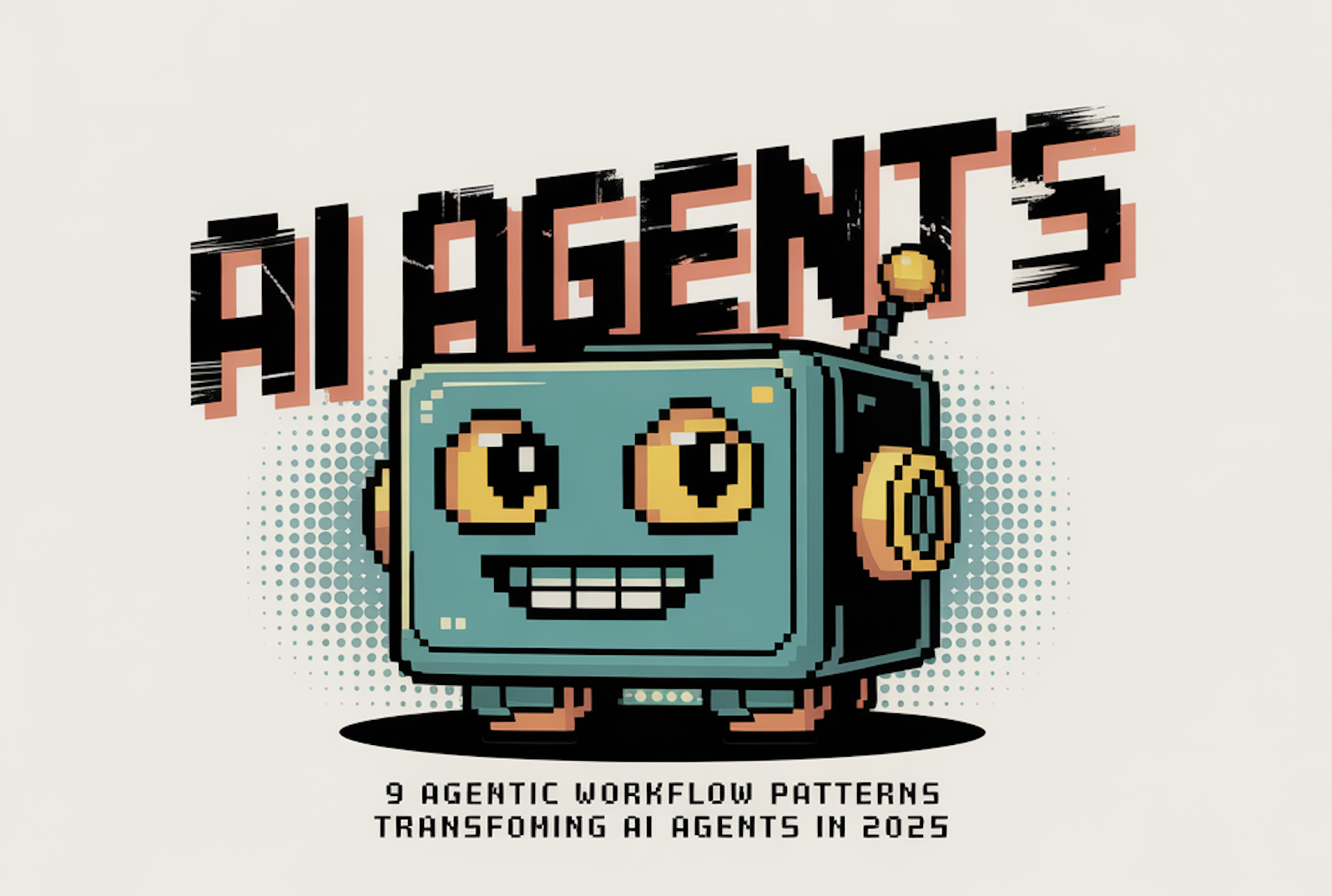9 Agentic AI Workflow Patterns Transforming AI Agents in 2025

AI agents are at a pivotal moment: simply calling a language model is no longer enough for production-ready solutions. In 2025, intelligent automation depends on orchestrated, agentic workflows—modular coordination blueprints that transform isolated AI calls into systems of autonomous, adaptive, and self-improving agents. Here’s how nine workflow patterns can unlock the next generation of scalable, robust AI agents.
Why Classic AI Agent Workflows Fail
Most failed agent implementations rely on “single-step thinking”—expecting one model call to solve complex, multi-part problems. AI agents succeed when their intelligence is orchestrated across multi-step, parallel, routed, and self-improving workflows. According to Gartner, by 2028, at least 33% of enterprise software will depend on agentic AI, but overcoming the 85% failure rate requires these new paradigms.
The 9 Agentic Workflow Patterns for 2025
Sequential Intelligence
(1) Prompt Chaining:
Tasks are decomposed into step-by-step subgoals where each LLM’s output becomes the next step’s input. Ideal for complex customer support agents, assistants, and pipelines that require context preservation throughout multi-turn conversations.
(2) Plan and Execute:
Agents autonomously plan multi-step workflows, execute each stage sequentially, review outcomes, and adjust as needed. This adaptive “plan–do–check–act” loop is vital for business process automation and data orchestration, providing resilience against failures and offering granular control over progress.
Parallel Processing
(3) Parallelization:
Splitting a large task into independent sub-tasks for concurrent execution by multiple agents or LLMs. Popular for code review, candidate evaluation, A/B testing, and building guardrails, parallelization drastically reduces time to resolution and improves consensus accuracy.
(4) Orchestrator–Worker:
A central “orchestrator” agent breaks tasks down, assigns work to specialized “workers,” then synthesizes results. This pattern powers retrieval-augmented generation (RAG), coding agents, and sophisticated multi-modal research by leveraging specialization.
Intelligent Routing
(5) Routing:
Input classification decides which specialized agent should handle each part of a workflow, achieving separation of concerns and dynamic task assignment. This is the backbone of multi-domain customer support and debate systems, where routing enables scalable expertise.
(6) Evaluator–Optimizer:
Agents collaborate in a continuous loop: one generates solutions, the other evaluates and suggests improvements. This enables real-time data monitoring, iterative coding, and feedback-driven design—improving quality with every cycle.
Self-Improving Systems
(7) Reflection:
Agents self-review their performance after each run, learning from errors, feedback, and changing requirements. Reflection elevates agents from static performers to dynamic learners, essential for long-term automation in data-centric environments, such as app building or regulatory compliance.
(8) Rewoo:
Extensions of ReACT allow agents to plan, substitute strategies, and compress workflow logic—reducing computational overhead and aiding fine-tuning, especially in deep search and multi-step Q&A domains.
(9) Autonomous Workflow:
Agents continuously operate in loops, leveraging tool feedback and environmental signals for perpetual self-improvement. This is at the heart of autonomous evaluations and dynamic guardrail systems, allowing agents to operate reliably with minimal intervention.
How These Patterns Revolutionize AI Agents
- Orchestrated Intelligence: These patterns unite isolated model calls into intelligent, context-aware agentic systems, each optimized for different problem structures (sequential, parallel, routed, and self-improving).
- Complex Problem Solving: Collaborative agent workflows tackle problems that single LLM agents cannot address, dividing and conquering complexity for reliable business outcomes.
- Continuous Improvement: By learning from feedback and failures at every step, agentic workflows evolve—offering a path to truly autonomous, adaptive intelligence.
- Scalability & Flexibility: Agents can be specialized, added, or swapped, yielding modular pipelines that scale from simple automation to enterprise-grade orchestrations.
Real-World Impact & Implementation Best Practices
- Design for Modularity: Build agents as composable, specialized entities. Orchestration patterns manage timing, data flow, and dependencies.
- Leverage Tool Integration: Success depends on seamless interplay between agents and external systems (APIs, cloud, RPA), enabling dynamic adaptation to evolving requirements.
- Focus on Feedback Loops: Reflection and evaluator–optimizer workflows keep agents improving, boosting precision and reliability in dynamic environments like healthcare, finance, and customer service.
Conclusion
Agentic workflows are no longer a future concept—they are the cornerstone of today’s leading AI teams. By mastering these nine patterns, developers and architects can unlock scalable, resilient, and adaptive AI systems that thrive in real-world production. The shift from single-step execution to orchestrated intelligence marks the dawn of enterprise-wide automation, making agentic thinking a required skill for the age of autonomous AI.
Feel free to check out our GitHub Page for Tutorials, Codes and Notebooks. Also, feel free to follow us on Twitter and don’t forget to join our 100k+ ML SubReddit and Subscribe to our Newsletter.
Michal Sutter is a data science professional with a Master of Science in Data Science from the University of Padova. With a solid foundation in statistical analysis, machine learning, and data engineering, Michal excels at transforming complex datasets into actionable insights.



